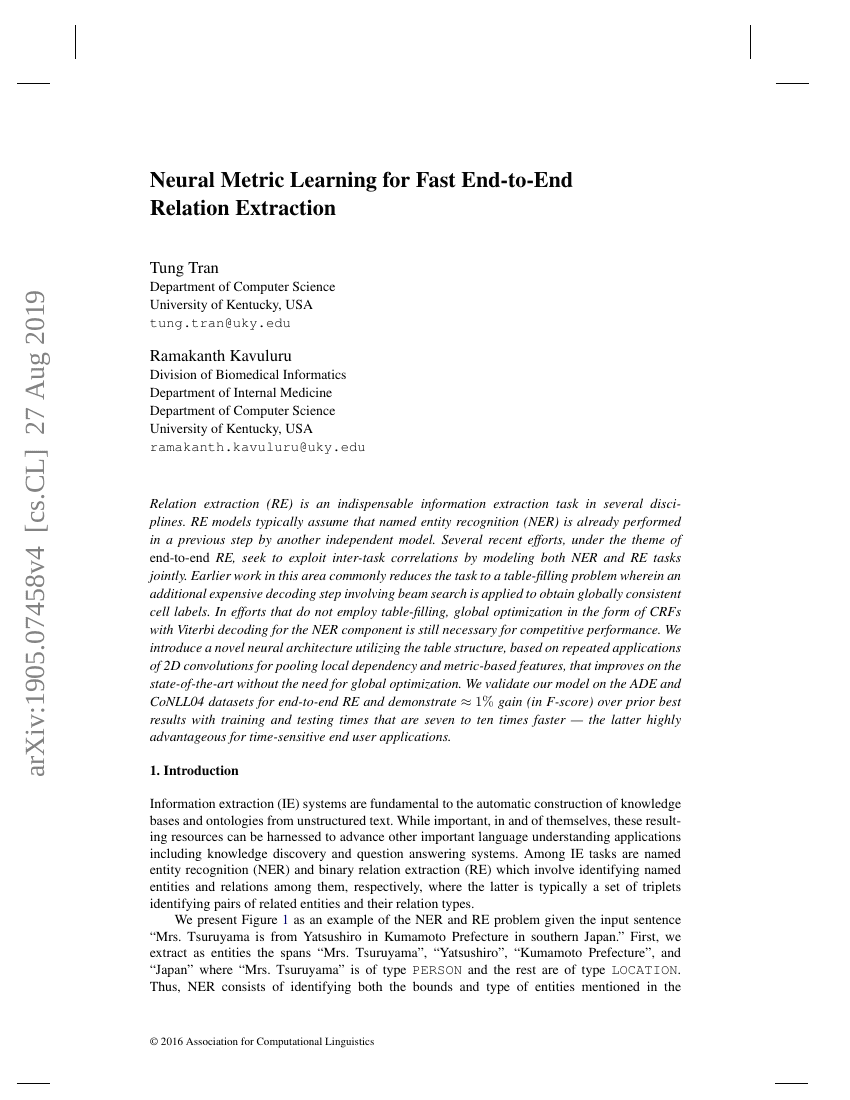Command Palette
Search for a command to run...
Tung Tran; Ramakanth Kavuluru

Abstract
Relation extraction (RE) is an indispensable information extraction task in several disciplines. RE models typically assume that named entity recognition (NER) is already performed in a previous step by another independent model. Several recent efforts, under the theme of end-to-end RE, seek to exploit inter-task correlations by modeling both NER and RE tasks jointly. Earlier work in this area commonly reduces the task to a table-filling problem wherein an additional expensive decoding step involving beam search is applied to obtain globally consistent cell labels. In efforts that do not employ table-filling, global optimization in the form of CRFs with Viterbi decoding for the NER component is still necessary for competitive performance. We introduce a novel neural architecture utilizing the table structure, based on repeated applications of 2D convolutions for pooling local dependency and metric-based features, that improves on the state-of-the-art without the need for global optimization. We validate our model on the ADE and CoNLL04 datasets for end-to-end RE and demonstrate $\approx 1\%$ gain (in F-score) over prior best results with training and testing times that are seven to ten times faster --- the latter highly advantageous for time-sensitive end user applications.
Benchmarks
| Benchmark | Methodology | Metrics |
|---|---|---|
| relation-extraction-on-ade-corpus | Relation-Metric | NER Macro F1: 87.02 RE+ Macro F1: 77.19 |
| relation-extraction-on-conll04 | Relation-Metric with AT | NER Macro F1: 84.15 RE+ Macro F1 : 62.29 |
Build AI with AI
From idea to launch — accelerate your AI development with free AI co-coding, out-of-the-box environment and best price of GPUs.